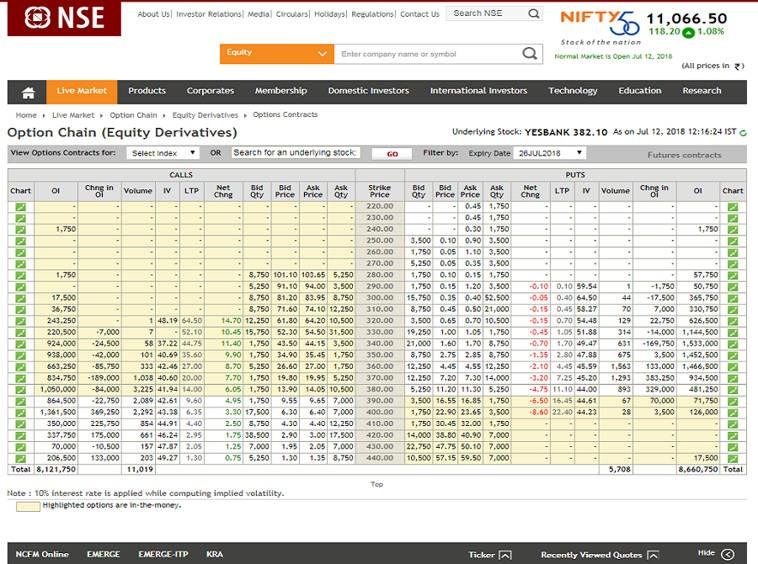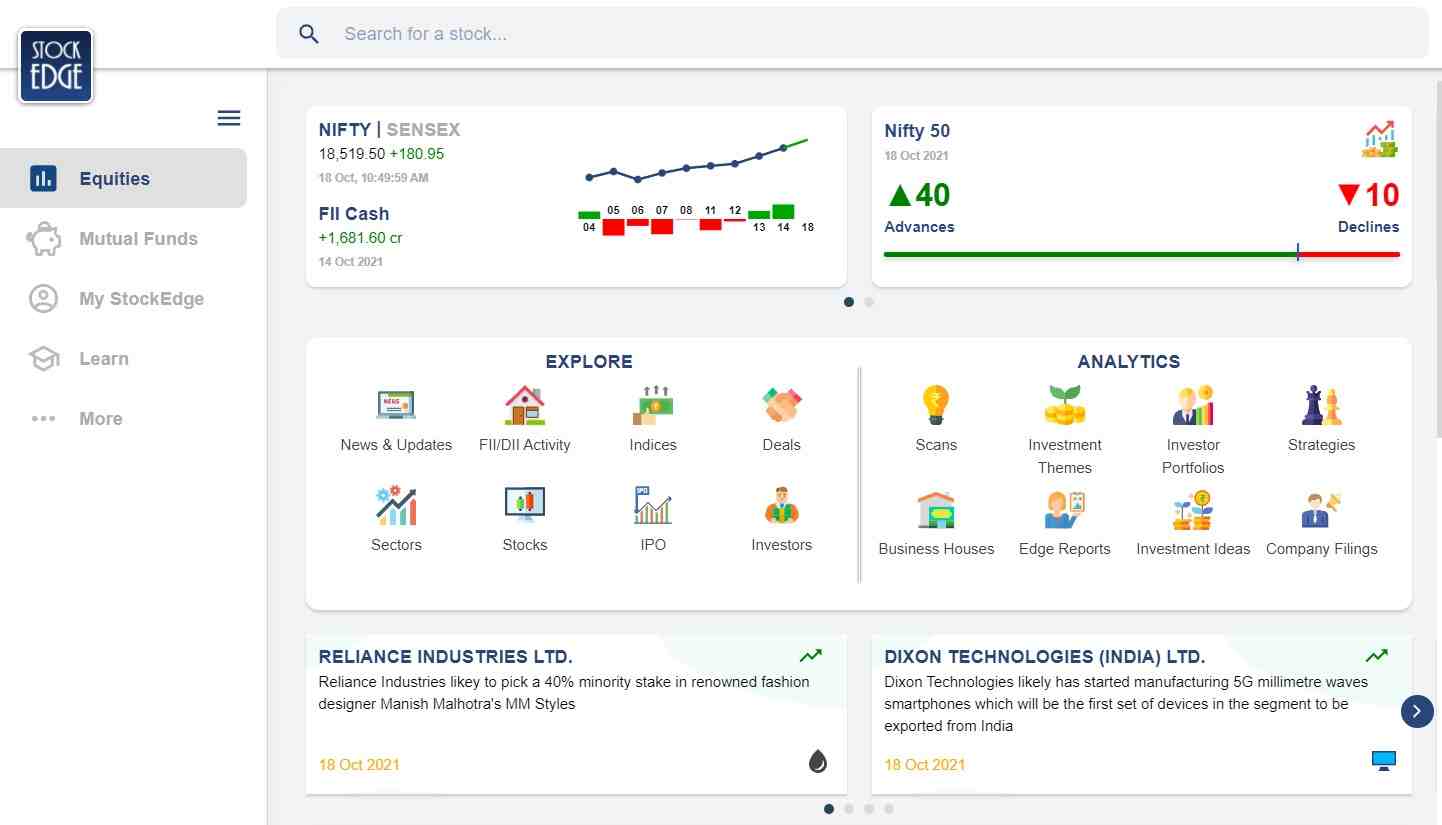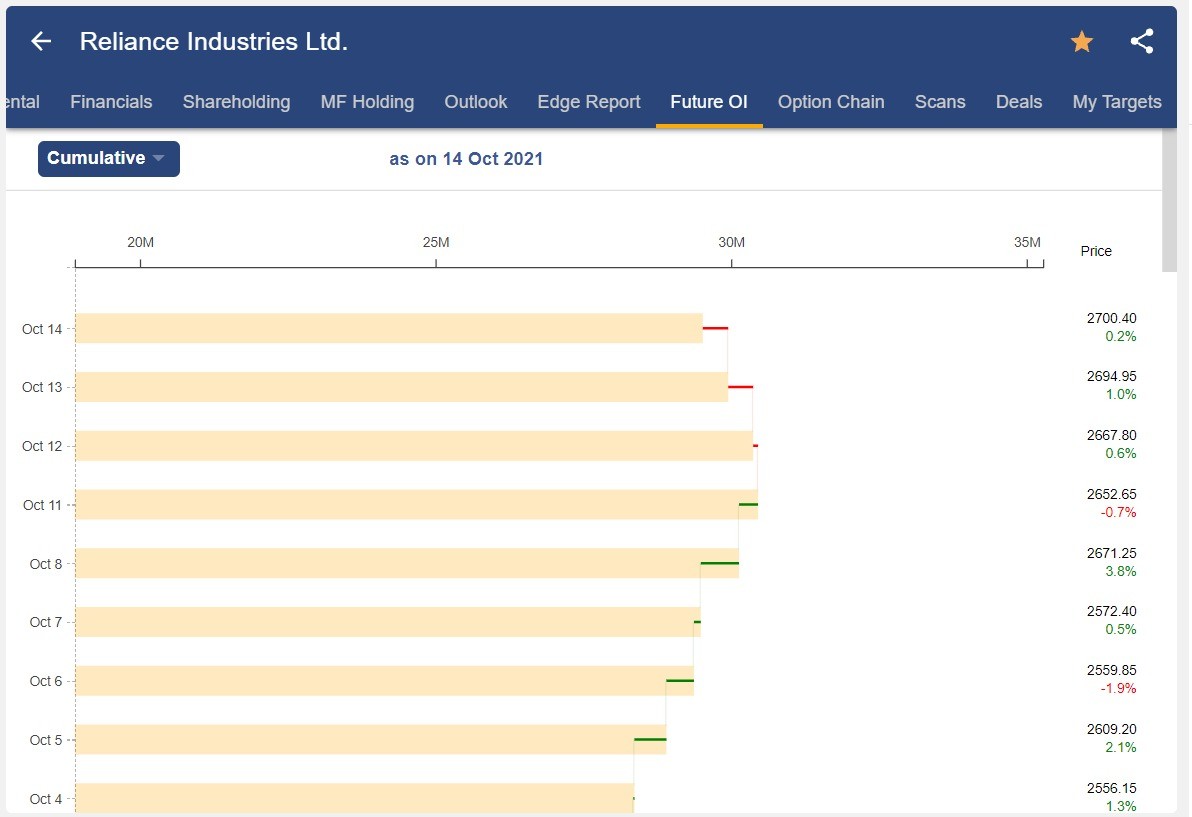Open Interest defines the total number of open or outstanding contracts presently held by the market participant at a given time. Open Interest analysis helps in the identification of stock market trends.
In simple language, open interest analysis helps a trader to understand the market scenario by only showing a number of futures contracts that have been changed hand during the market hours. Open Interest analysis is mostly used by Future and options contract traders. Open Interest data changes day by day depending on the outstanding contracts.
Table Of Contents
- How to analyze open interest data for identifying trend?
- How to find open interest in stocks?
- How to extract meaning out of Options Chain?
- How to read open Interest data using StockEdge?
- Frequently Asked Questions
- What does open interest indicate?
- What is the difference between open interest and volume?
- What is the use of open interest?
- Should open interest considered while trading in options?
- Bottom line:
Let’s take an example to understand the whole picture.
There are four participants in the market A, B, C, D, and E.
On 1st July, A buys 10 contracts from B => OI 10
2nd July C buys 20 contracts from D => OI 30
3rd July A sells his 10 contracts to D => OI 20
4th July E buys 20 contracts from C => OI 20
So, we can understand how OI changes depending on the change in hand of contracts.
Hence,
- When a new entrant trades with a new entrant in F&O market Open Interest goes up
- When an existing position holder squares off with entry of a new entrant, open interest remains unchanged
- When two existing position holders square off their positions we see open interest go down
Have a look on basic Open Interest Analysis:

How to analyze open interest data for identifying trend?
A trend can be defined by price upward and downward direction but the sustainability of that trend is questionable. There are some important factors that back up the price to take a certain direction. Open interest data is one of the factors and a reason for a sustainable trend as well as a trend reversal.
When the price is going up or down and the future open interest increases alongside the price at a certain level then we can expect that the price movement is going to sustain. On the other hand when a trend is present in the market and a sudden fall in futures open interest is visible then we should be doubtful about the trend. There is a chance of trend reversal.
Open interest increasing means fresh money is flowing into the market and a decrease in open interest suggest money outflow from the market. Buyers move the market up by investing fresh cash into the market while the seller does the opposite. Oi increases when the fresh contract exchanges hands.
A trend depends on how many fresh contracts is exchanging hands with the new price move. If the fresh cash does not flow into the market and the fresh contract does not exchange hands, then we should be doubtful about the trend.
How to find open interest in stocks?
There are multiple sources where we can find out the open interest of a stock. The most reliable source is NSE open interest, this is the site of the National Stock exchange (NSE). You will find out the last day’s Open Interest as shown in the picture. However, data are updated at the end of the day (EOD).

For investment or trading in futures contracts, we can take the help of this data. There is another way where we can find open interest and this is especially for the options trader.
How to extract meaning out of Options Chain?
The option Chain of any stock gives us a great understanding of how the bulls and bears are placed in the markets. Normally bulls participate by selling put options and bears participate by selling calls.
We must understand one important point that due to inherent time decay in options, there are generally a large number of option sellers in the market. A large amount of option open interests at any particular strike price is the point of significance.
If there is a significant gap-up or gap-down opening in the market contrary to the open interest build-up then the unwinding of the open interest pushes the market more in gap-up /gap-down direction due to the sheer urgency of short covering. Sharper the gap up or gap down, generally more impactful the follow-up short covering of options in that particular direction.
Let us look at the example of Yes Bank. The stock had been already in an up-trend. However, there was a fair amount of call writing at 370, 380, and 400 strike prices.
As Yes Bank opened the gap up there was a good amount of short covering at 370 and 380 calls. Simultaneously there were strong put additions in 360, 370, and 380 strike prices. That pushed the stock even higher during the initial phase of the day.


How to read open Interest data using StockEdge?
StockEdge has an open interest analysis tool. It also provides you with the open interest data at the end of the day (EOD).
Finding the Open Interest in the StockEdge application is really easy. Just tap on the ‘stocks’ button from the home tab. Type the name of the stock in the search bar (remember the stock has to be listed in the Future and Options segment) and check its OI.



You can also watch the video below on Open Interest:
There are also many more exciting features available in the StockEdge app. From learning about the stock market to investing in stocks, this app accomplishes each and every requirement related to the market.
Suggested Read – How to use Open Interest to increase profitability.
Frequently Asked Questions
What does open interest indicate?
The open interest analysis helps a trader to understand the market scenario by only showing a number of futures contracts that have been changed hand during the market hours.
What is the difference between open interest and volume?
Volume refers to the number of contracts that have been traded in a given period, and open interest indicates the number of contracts that are active, or not settled.
What is the use of open interest?
The open interest helps in understanding whether the trend of the stock will continue or reverse.
Should open interest considered while trading in options?
Yes the open interest should be definitely considered while trading in options.
Bottom line:
Open Interest data analysis should be done as a supportive tool along with technical analysis. It is important to look on them both at the end of the day and during the day. For stocks which are in F&O segment high open interest build-up in futures and options are good indication of market direction.
This is not a straight forward tool though and requires experience to judge the role of open interest build-up at various stages of any expiry. So to master the art, we suggest traders and investors to study the open interests of stocks with regularity and discipline.
Tags: english